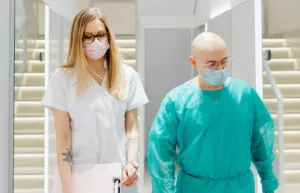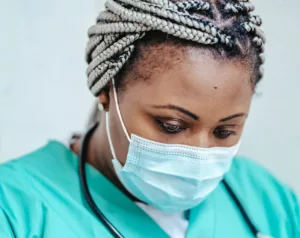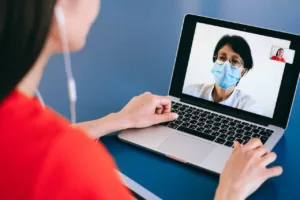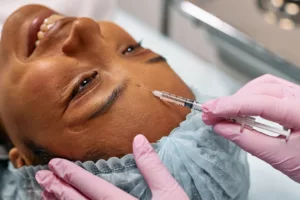The global pandemic has sent us all on an unpredictable ride, with no real end in sight. Worldwide, we are doing our best to adapt to living with the numerous challenges this brings, while holding our breath and hoping that there won’t be any more dips in the road. Many industries have experienced fundamental changes, while others remain mostly unaffected.
In the medical field, elective surgery certainly took a blow early on in the game, but it has resumed, with gusto. There have also been some interesting trends emerging for surgical practices.
These trends are mainly driven by the fear of a hospital setting and the need to adapt to maintain revenue. They have both positive and negative impacts.
Fear About Entering a Hospital Setting
1. Extended Walk-in Hours

Practices with walk-in clinics are experiencing a significant uptick in numbers. Patients who would ordinarily seek out an Emergency Room for their injury have opted for the surgical practice setting, in the hope of a safer, more contained environment.
Presumably patients would also be hoping for a more efficient experience and avoid long wait times. As a result, many practices have extended their walk-in clinic hours to accommodate the influx.
2. Scheduling Procedures at An ASC
Patients are requesting practices to schedule their procedures at an ASC because they feel safer being operated on at the ASC rather than in a hospital. As a result, practices are working to accommodate as many surgeries as possible, including total joint replacements, which were traditionally performed in a hospital setting.

“The volume of procedures at our ASC has increased by 25% in the last quarter,” said Melody Winter, Practice Administrator at IBJI (Glenview), whose team use Surgimate Practice to schedule and coordinate all surgeries. Look for this trend to continue at surgical practices across the country.
3. Increased Use of Technology
In order to try to prevent patients from having to come into the clinic unnecessarily, surgeons and support staff have drastically increased their use of apps and telehealth, particularly for post-surgery care.
According to Definitive Healthcare, there have been over 41 million telehealth claims filed between April and July 2020, which is a 4,000% year over year increase for the same time period.

Many people across the country are pushing off early detection screenings and diagnostic tests for various cancers. This is bad news for patients and the healthcare system at large. The diagnostic delay lowers successful treatment rates due to the delay in finding the cancers.
This can also result in delay in diagnosis, making it less likely to be treated successfully when the cancers are eventually found, and a potentially more expensive treatment plan.
The head of the National Cancer Institute has warned that delays in screening, diagnosis and treatment because of the pandemic could lead to as many as 10,000 excess deaths in the U.S. from breast and colorectal cancer in the next decade.
4. Staying Remote
Surgical practices have instituted policies that don’t allow vendors or reps to meet face-to-face with staff inside the clinic. This has forced surgical practices to digitally assess all new technology, solutions, and even equipment.

And with in-person conferences seemingly a long-lost memory, administrators are not only mourning their annual trips to Vegas and Kiawah, but they are having to seriously rethink the way they evaluate, purchase and implement new technology and services for the practice.
COVID-19 Financial Concerns
5. Merging Practices

Many surgical practices are merging in order to gain more buying power and financial stability. This has been a growing trend among surgical practices even pre-pandemic, so the financial strains from COVID will certainly accelerate this trend. We have already seen numerous practices merging in the last three months, so look out for many more mergers in the future.
6. Increased Last-minute Cancelations
Surgical practices are experiencing more cancellations than ever before despite the improvement in cancellation stats since April (88% among Surgimate clients).
In addition, between 48-72 hours prior to surgery almost all surgical facilities now require patients to be tested for COVID-19. Patients testing positive have caused numerous cancellations, leaving scheduling and support staff scrambling to try and fill that slot.
Faces
7. Increasing Plastic Surgery

Plastic surgeons are busier than they’ve ever been! Why? As people are working from home, many are utilizing screen sharing technology (zoom fatigue anyone?). And as they look at themselves on the screen all day, they think, “maybe it’s time to get that Botox done after all.”
The Arizona clinic quoted in this article has seen a 30% increase in people asking for mid- and upper-face injections. That’s a lot of Botox!
Another factor driving the increase in plastic surgery work is wearing a mask. Once you’ve covered up half your face, you are naturally inclined to focus on what’s above your nose — your eyes. There has been a huge increase in people getting more cosmetic work done on their eyes, like an eyelid lift.
Many of these trends were already brewing (minus the major surge in plastic). And COVID-19 has accelerated these trends. It will be interesting to see whether these trends hold. Particularly, we’re interested in those associated with consistently using telehealth more in the long term, with total joint replacements being performed at ASCs, and with patients turning to walk-in clinics instead of the OR.
COVID-19 has flipped our world as we know it, but some of the trends are actually positive and will be beneficial to us in the long run.
- Sari Nossbaumhttps://www.surgimate.com/author/sari/
- Sari Nossbaumhttps://www.surgimate.com/author/sari/
- Sari Nossbaumhttps://www.surgimate.com/author/sari/
- Sari Nossbaumhttps://www.surgimate.com/author/sari/




